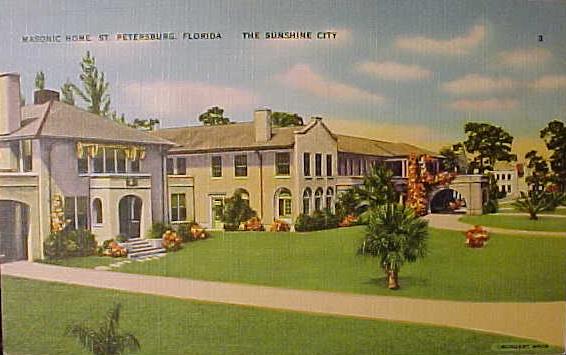Masonic Homes
For over a hundred years, many Grand Lodges have built and maintained what have come to be known as Masonic Homes.
The first of these Homes was the Masonic Widows and Orphans Home and Infirmary which was established on 200 acres of land in the city of Louisville, Kentucky, in 1866. Initially, many of the Homes were created to provide shelter, education and training for orphaned children. Now the Masonic Home in Kentucky is only operated for the elderly.
Over time, several factors contributed to the alleviation of the need that had prompted the construction of these homes. These included economic improvements and the advent of Social Security. Also, medical advances reduced the death rates from tuberculosis, pneumonia, and similar diseases, which had previously resulted in the premature death of young parents.
At present, only nine Grand Lodges continue to operate Children's Homes: California, Georgia, Illinois, Louisiana, Mississippi, Nebraska, North Carolina, Pennsylvania and Texas. In these Homes, everything is done to provide the children with a stable, supportive environment. They attend local schools in some jurisdictions; in others education is provided in the Home. The Grand Lodges raise funds to send the children to summer camps and to provide opportunities for sports and entertainment throughout the year. They also make scholarships available to the children for college or advanced training.
There has been no decline in the need for Homes for elderly Masons. Medical advances in this country have been so great that life expectancy has increased and the elderly constitute a large and growing segment of the population. Savings, pensions, and social security benefits are sufficient for many people to be able to maintain their own homes. Others are less fortunate, and need the help which Masons are ready and willing to give.
A recent publication by the Masonic Service Association of the United States shows that 34 of our Grand Lodges currently maintain Homes for the elderly. The Grand Lodges of Alabama, California, Connecticut, Delaware, the District of Colombia, Florida, Georgia, Illinois, Indiana, Iowa, Kansas, Kentucky, Louisiana, Maryland, Massachusetts, Michigan, Minnesota, Mississippi, Missouri, Montana, Nebraska, New Hampshire, New Jersey, New York, North Carolina, Ohio, Oklahoma, Oregon, Pennsylvania, Texas, Virginia, Washington, West Virginia, and Wisconsin.
Although more than half of these states already had Homes for the elderly by 1910, most states have renovated older buildings and constructed new facilities to meet the changing needs of their residents. Different levels of care are frequently provided, so that independence and quality of life are not sacrificed. A typical state provides residential accommodations for those without serious health or mobility problems, a facility with skilled nursing and medical care for short-term illnesses or those needing surgery, and also long-term accommodation for the seriously, chronically ill seniors. A relatively new development is the investment some jurisdictions are making in "Independent Living" communities for younger retired Masons, their wives and widows. These communities include apartment units in attractive locations close to the Masonic Home, so that all the Home's recreational facilities and activities are accessible as well as emergency nursing care.
Grand Lodge officers are generally appointed to serve as trustees and board members at the Homes. They and the administrators keep the Grand Lodge in touch with residents' needs and the likely future needs of older Masons. Special projects such as landscaping, equipping new laundry rooms, providing patio furniture or mini-busses are funded by the Grand Lodges, and many Masons give freely of their time and talents to the Homes and their residents.
Those states that do not operate a Home, maintain Charity Funds which are used to provide relief for elderly Masons and their widows in their state. The amounts contributed to these funds differ widely, depending on various factors. These include the alternatives available, and the level of need in the jurisdiction, the number of Masons in the area, and the particular history of charity in the Grand Lodge.
In the states that do support a Masonic Home, financial support for the Home is one of the major Grand Lodge charities. Operating expenses for the Homes whose figures were available for 1985, came to over $88 million dollars.
Masons regard it as a privilege to be able to support their Brethren in their golden years, and the Homes give testimony to the brotherly love and affection which are the keystone of Freemasonry.
The Masonic Home of Florida (then & now)
The Masonic Home of Florida as it looked in 1918
Most of the buildings seen in the above Postcard from 1918 have been torn down and replaced with a new red-brick multi-use facility. Now the property has grown to 18 acres and contains several buildings where amenities include apartments, nursing home rooms, several recreation rooms, dining room and cafeteria, a 5,000 book library, beauty salon, gift and snack shop and a nondenominational chapel.
![]()


